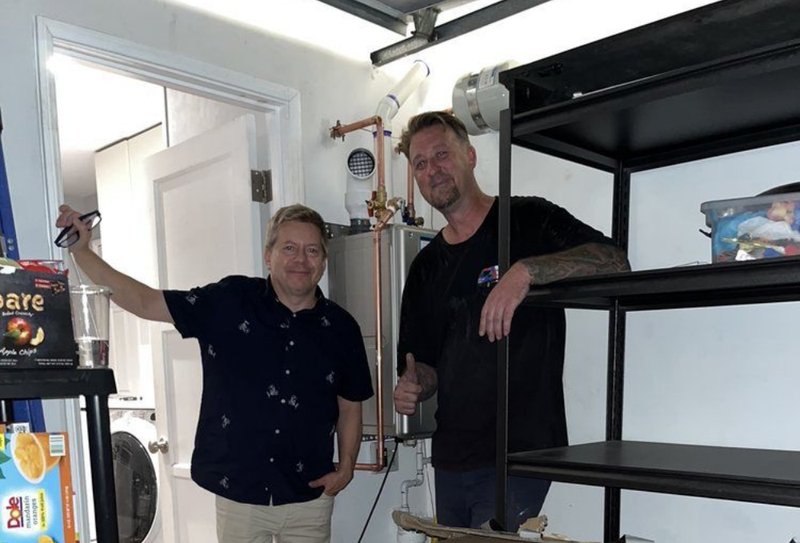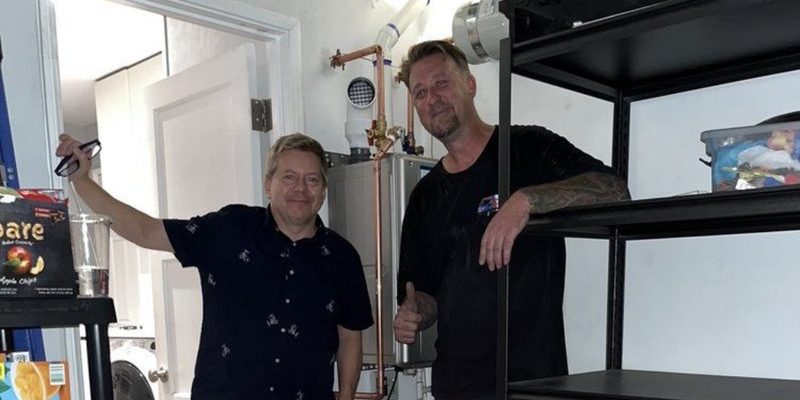
Here’s the deal: just as you wouldn’t ignore a check engine light in your car, ignoring Error SE on your water heater isn’t a good idea either. In fact, leaving it unfixed could lead to a cascade of issues, starting with inconsistent water temperatures and, in more severe cases, even damaging the heater. But what does this all mean for you at home? Let’s take a deeper dive to understand the implications and the steps you can take to address this pesky error code.
Understanding Error SE on Your Rheem Water Heater
When it comes to water heaters, Error SE specifically refers to a problem with the temperature sensors. Think of it like a thermometer that’s gone haywire, no longer able to accurately read the temperature. These sensors are crucial in regulating the heater’s operation, ensuring the water is heated to your desired preference without overheating. Imagine if that tiny thermometer becomes faulty—your hot shower might abruptly become a cold one or vice versa.
So, what causes these sensors to malfunction? A range of culprits could be at work. It might be a wiring issue, where the connections are loose or corroded, much like your phone charger getting frayed and acting up. Alternatively, sediment buildup due to hard water could be affecting the components around the sensor, akin to plaque clogging up your arteries. Even simple wear and tear over time can cause these sensors to give up.
Ignoring these issues might seem like a minor inconvenience at first. However, over time, it could snowball into larger problems. For instance, your water heater could start heating the water excessively, leading to potential scalding risks or even damage to the heater itself. It’s crucial to address the error before it leads to more significant, costly repairs or replacements.
The Consequences of Ignoring Error SE
So, what really happens if you leave the Error SE unchecked? First off, there’s the immediate discomfort of fluctuating water temperatures. This can turn your leisurely showers into a game of freezing and burning roulette, which is hardly an enjoyable experience. If consistency is important to you—and let’s face it, who doesn’t appreciate a good, steady hot shower?—then fixing this error is crucial.
Beyond personal discomfort, though, there are more serious implications. A malfunctioning sensor can cause the heater to work harder than necessary, leading to increased energy consumption. Think of it like a car that’s stuck in gear and revving its engine constantly; it’s inefficient and drives up fuel costs. Similarly, your electric or gas bill could see a noticeable hike if the water heater runs inefficiently.
Moreover, there’s the risk of long-term damage to the heater itself. The prolonged strain from inconsistent heating can wear down the internal components, much like how overworking a machine without maintenance can lead to breakdowns. What starts as a simple sensor issue could end up in the need for a costly replacement if left unattended. So, fixing this can save you from a world of hassle—and expense—down the line.
Fixing Error SE: What Can You Do?
Fixing Error SE might sound intimidating at first, especially if you’re not exactly a DIY enthusiast. But don’t worry, you don’t need to be an expert to troubleshoot this issue. The first step is to reset the water heater. It’s similar to turning your computer off and on again when it acts up. This can sometimes clear minor glitches, allowing the system to recalibrate and work properly.
If resetting doesn’t do the trick, then it’s time to delve a little deeper. Checking the wiring connections to the sensors can help; ensure they’re secure and free from corrosion. You might need to replace damaged wires, akin to swapping out old, faulty extension cords for new ones. If wiring isn’t the problem, examining the heater for sediment buildup is another step. Flushing the heater can remove these deposits, ensuring the sensors operate in a clean environment.
In some cases, the sensors themselves might need replacing. This could be a bit more complex, like changing spark plugs in your car, and might require professional assistance. If at any point you feel out of your depth, calling a technician is a wise choice. They’ll have the tools and expertise to handle the inner workings of your heater, ensuring it’s back to optimal functioning without any potential safety risks.
Preventing Future Errors
Once you’ve tackled the Error SE, it’s worth considering how to prevent similar issues in the future. Regular maintenance is key. Just as you’d service your car to prevent breakdowns, your water heater benefits from periodic check-ups. This ensures all components function correctly and helps identify any minor issues before they become major headaches.
Keeping an eye on your water quality is also important. If your home has hard water, installing a water softener can reduce sediment buildup, much like using conditioner to prevent hair from tangling. Additionally, routinely flushing your heater can help keep the tank and sensors clean, extending their lifespan and efficiency.
Ultimately, staying proactive about your water heater’s health can save you from unexpected cold showers and costly repairs. By understanding how to address and prevent Error SE, you ensure that your Rheem water heater provides consistent and efficient service, keeping those hot showers flowing smoothly whenever you need them.
